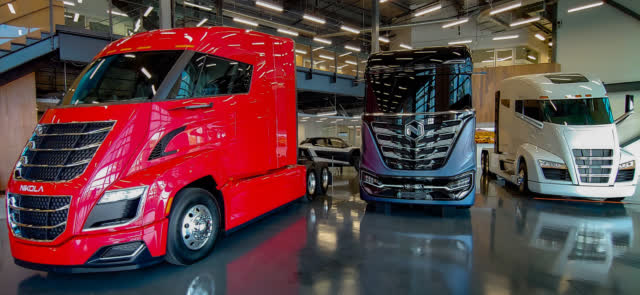Nikola Corp. (NKLA) recently made its mark on the public markets following a reverse merger with VectoIQ, and shares have soared to almost $100 in early last week, before settling in to close June 15 at $68.35 per share – understanding that this price would value the company at almost $25 billion. Nikola has basically no revenue, and plans on selling its first BEV by 2021, leaving the company a pure spec play at this point in time.
Source: nikolamotor.com
Revenues: Past, Present and Future
Present revenues are not zero – they’re just barely more than that. For the quarter ended March 2019, revenues were $142,000. For the quarter ended March 2020, Nikola’s revenues of $58,000 (a mediocre annual single person salary) were derived from “services related to solar installation projects that are completed in one year or less [which] are expected to be discontinued.” So that would give no more potential revenue up until the launch of Nikola’s vehicles, as revenues from solar were the only stream that the company has had.
So the company’s revenues have fallen 53.2% YoY – with the decline “related to a decrease in solar installation services” as the company is no longer prioritizing that segment of business for the future. However, whereas cost of revenues equaled 50% of revenues (giving a gross margin of 50%), for the most recent quarter, cost of revenues rose to 74.1% of revenues, leaving a gross profit margin at 25.9%. If that’s the case (with the cost of revenues declining from a “decrease in related revenues”), why did gross margin fall so much? Of course, Nikola hasn’t provided any extra details besides the costs being incurred from materials, labor and other direct costs.
Regardless of the fact that these revenues are no longer present, having such a large deviation
